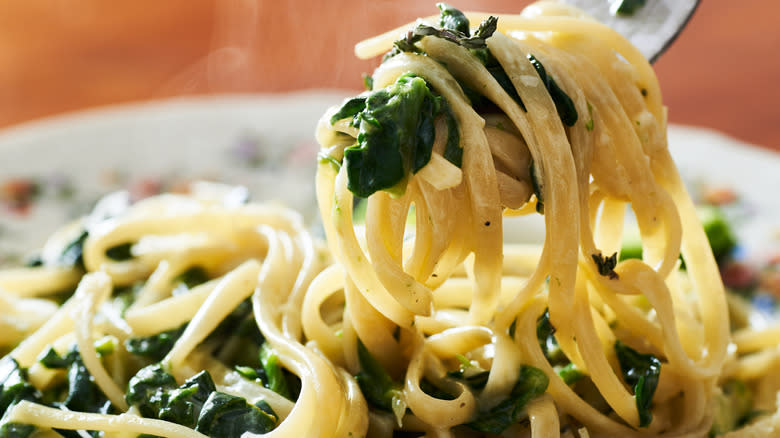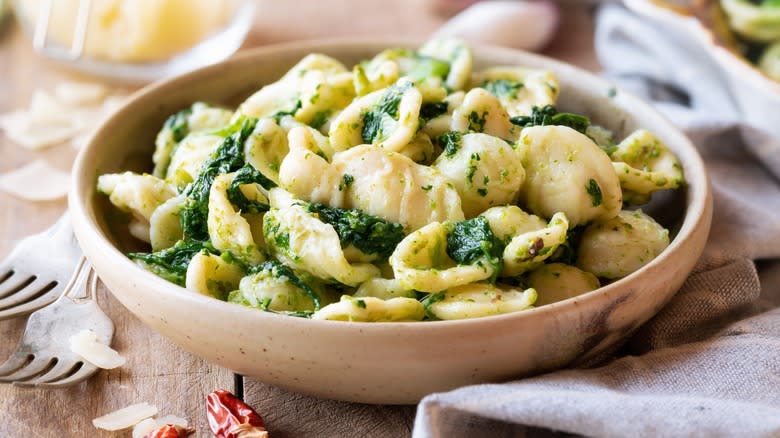What To Keep In Mind When Adding Fresh Vs Frozen Spinach To Pasta

Spinach is an easy, available, and nutritious ingredient to add to any number of meals. When adding spinach to pasta dishes, however, you'll need to take an extra step of draining and squeezing it before incorporating it into the stuffing, dough, or lasagna layer. Furthermore, both fresh and frozen spinach are worthy candidates to add to your pasta dish, but they have slightly different textures and flavor profiles.
Frozen spinach is very convenient, especially because you know exactly how much you're getting. It has a more diluted vegetal flavor than fresh spinach and a much softer texture. Fresh spinach has a chewier, more fibrous texture and a fresher flavor, but it cooks down to a fraction of its original volume, leaving you guessing how much to buy and cook. That said, frozen spinach gets cooked by steaming or blanching, but you can saute fresh spinach in earthy olive oil with aromatics and seasonings for a more flavorful pasta ingredient.
Whichever type of spinach you choose for your pasta dish, it should be at room temperature when you cook it. So, if you're using frozen spinach, make sure it is completely thawed. You'll also need to drain all the excess water through a colander, then press the spinach to extract any residual water or wrap it in cheesecloth to squeeze out every last drop.
Read more: 20 Popular Canned Soups, Ranked Worst To Best
Substituting Fresh Spinach For Frozen Spinach

Another determining factor in whether or not to use fresh or frozen spinach in a dish is the recipe in question. If you're making a creamy pasta dish with whole spinach leaves sauteed into the sauce or wilted onto the hot pasta, fresh spinach is the clear choice. However, if you're blending the spinach with ricotta to stuff shells, slather onto a lasagna layer, or chop up and incorporate into pasta dough, frozen spinach is more practical.
If you would still rather use fresh spinach instead of frozen, the key is to calculate the change in volume from fresh to cooked spinach. Frozen spinach is typically sold in ten-ounce packages, converting to about 1 ? cups of cooked spinach. It takes 1 pound of fresh spinach to cook down to 1 ? cups. You can use a dry cooking method like sauteeing to draw the water out of the spinach for an easier draining process. You can also quickly blanch spinach and lay the leaves on paper towels in a single layer to dry them out.
Some recipes recommend draining frozen spinach overnight to ensure it's as concentrated and dry as possible. If you are blending spinach into ricotta and the mixture appears too watery, try adding dry-aged parmesan or another aged cheese to soak up residual water while maintaining optimal flavor.
Read the original article on Tasting Table